Recent Blog Posts
Top 10 Industrial Plants Creating Toxic Emissions in Allegheny County
 Pittsburgh consistently ranks as one of the most polluted areas in the United States. A study performed by researchers at the University of Pittsburgh found that Allegheny County is in the top 2 percent of counties in the U.S. where residents are at risk of cancer from air pollution. The Pittsburgh area is home to prominent companies in the steel industry, as well as multiple other types of industrial plants. With so many facilities working with toxic chemicals, emissions of these dangerous substances can significantly affect the health of the region’s residents. People who have been affected by these dangerous chemicals may be able to take legal action against companies that have violated environmental regulations through toxic torts.
Pittsburgh consistently ranks as one of the most polluted areas in the United States. A study performed by researchers at the University of Pittsburgh found that Allegheny County is in the top 2 percent of counties in the U.S. where residents are at risk of cancer from air pollution. The Pittsburgh area is home to prominent companies in the steel industry, as well as multiple other types of industrial plants. With so many facilities working with toxic chemicals, emissions of these dangerous substances can significantly affect the health of the region’s residents. People who have been affected by these dangerous chemicals may be able to take legal action against companies that have violated environmental regulations through toxic torts.
Industrial Facilities Responsible for Toxic Chemical Emissions
PennEnvironment Research & Policy Center has identified the top sources of air pollution in Allegheny County:
When Can an Employee Sue an Employer for Wrongful Termination?
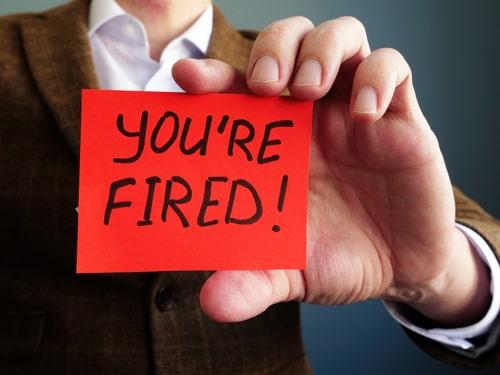 Nobody should have to face discrimination in the workplace. Unfortunately, far too many employees are subject to harassment and other forms of discrimination based on their race, gender, sexual orientation, or other factors. Some of the most serious discrimination cases involve wrongful termination. When an employee is terminated from their job for illegal reasons, their loss of income can cause a great deal of financial difficulty, as well as significant emotional distress. Workers who have been wrongfully terminated will need to understand how they can take legal action against their former employer and address this issue.
Nobody should have to face discrimination in the workplace. Unfortunately, far too many employees are subject to harassment and other forms of discrimination based on their race, gender, sexual orientation, or other factors. Some of the most serious discrimination cases involve wrongful termination. When an employee is terminated from their job for illegal reasons, their loss of income can cause a great deal of financial difficulty, as well as significant emotional distress. Workers who have been wrongfully terminated will need to understand how they can take legal action against their former employer and address this issue.
Illegal Reasons for the Termination of an Employee
As is true throughout most of the U.S., Pennsylvania is an “at-will employment” state. If an employee does not have a contract or other provisions stating otherwise, either they or their employer may choose to end their employment at any time and for any valid reason. While a person may be fired because of poor job performance, or they may be laid off because an employer has encountered financial difficulties and is no longer able to pay their wages, there are a number of cases when a termination may be illegal. These include:
State Laws Limit the Use of Firefighting Foam Containing PFAS
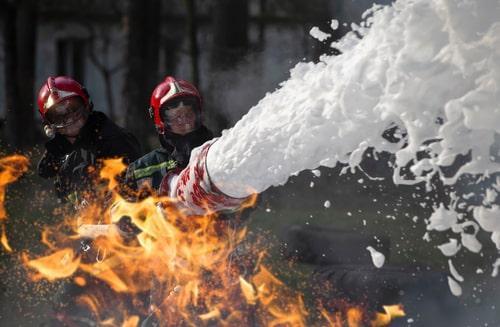 Firefighters and others who work around fires may be exposed to toxic chemicals due to the use of aqueous film-forming foam (AFFF). This type of firefighting foam may be used to control fires involving substances such as oil, gasoline, or jet fuel, and it can smother flames and cut off their oxygen supply. Many types of AFFF contain chemicals known as PFAS that have been linked with multiple types of serious health issues. Because this issue is an ongoing concern, numerous states have passed laws that limit the use of AFFF and address health concerns related to PFAS.
Firefighters and others who work around fires may be exposed to toxic chemicals due to the use of aqueous film-forming foam (AFFF). This type of firefighting foam may be used to control fires involving substances such as oil, gasoline, or jet fuel, and it can smother flames and cut off their oxygen supply. Many types of AFFF contain chemicals known as PFAS that have been linked with multiple types of serious health issues. Because this issue is an ongoing concern, numerous states have passed laws that limit the use of AFFF and address health concerns related to PFAS.
Recent Changes to State Laws Related to AFFF and PFAS
PFAS (per- and poly-fluoroalkyls) are known as “forever chemicals” that do not break down over time. They can accumulate in the environment, leading to health issues that affect people who are exposed due to chemicals in water or soil. The use of firefighting foam may result in injuries to firefighters, people who work at airports or military bases where oil or jet fuel fires need to be controlled, or people who live near areas where these chemicals may accumulate in the environment.
Are Steel Mill Workers at Risk of Asbestos Exposure and Mesothelioma?
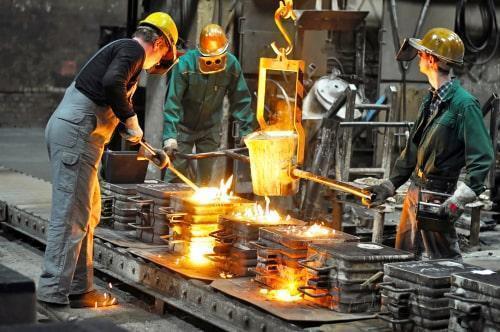 Working in an industrial setting can be dangerous. Due to the presence of large, fast-moving machinery, materials heated to extremely high temperatures, and a variety of other dangers, steel mill workers may be at risk of serious injuries in workplace accidents. However, even when the proper safety procedures are followed to prevent these types of accidents, workers may also be at risk of harm due to exposure to toxic substances. Asbestos is one substance that continues to affect workers in steel mills and similar settings, and those who have been exposed to this substance may contract a dangerous form of cancer known as mesothelioma.
Working in an industrial setting can be dangerous. Due to the presence of large, fast-moving machinery, materials heated to extremely high temperatures, and a variety of other dangers, steel mill workers may be at risk of serious injuries in workplace accidents. However, even when the proper safety procedures are followed to prevent these types of accidents, workers may also be at risk of harm due to exposure to toxic substances. Asbestos is one substance that continues to affect workers in steel mills and similar settings, and those who have been exposed to this substance may contract a dangerous form of cancer known as mesothelioma.
Causes of Asbestos Exposure in Steel Mills
For much of the 20th century, asbestos was a widely-used substance. Because it provides good insulation against heat and fire, it was often used in industrial settings, as well as building materials and other products. Once the dangers of asbestos became well-known, it stopped being used in many products. However, facilities that were built before these changes were made may still contain asbestos, putting workers at risk of harm.
How Can Steel Mill Workers Be Affected by Toxic Chemical Exposure?
 Industrial workers face a number of risks on a daily basis. When working around large, heavy equipment, the possibility of injuries is ever-present, and workers follow multiple safety practices to prevent accidents. However, in addition to the possibility of injuries in workplace accidents, workers at steel mills and similar facilities may also suffer harm after being exposed to toxic chemicals. These exposures may occur because of chemical spills, but in many cases, ongoing exposure over multiple months or years of work can lead to significant health issues. Workers who have been affected by toxic chemicals will need to understand their legal options and determine whether they can receive compensation for their injuries.
Industrial workers face a number of risks on a daily basis. When working around large, heavy equipment, the possibility of injuries is ever-present, and workers follow multiple safety practices to prevent accidents. However, in addition to the possibility of injuries in workplace accidents, workers at steel mills and similar facilities may also suffer harm after being exposed to toxic chemicals. These exposures may occur because of chemical spills, but in many cases, ongoing exposure over multiple months or years of work can lead to significant health issues. Workers who have been affected by toxic chemicals will need to understand their legal options and determine whether they can receive compensation for their injuries.
Dangerous Chemicals That May Cause Harm to Workers in Steel Mills
Those who work in the metal production industry deal with hazardous chemicals and substances on a regular basis. Some chemicals that may cause workers to suffer injuries include:
How Does Pennsylvania Law Address Dog Bite Injuries?

In 2019, it is estimated that there are roughly 63 million dogs that are designated as pets in the United States. Looking further into that number, around 36 percent of households own at least one canine. Known as man’s best friend, dogs are expected to be playful animals; however, personal injuries can occur from dog bites. A victim may seek to hold a canine's owner responsible for dog bite injuries. In many cases, a premises liability claim may be brought against a property owner to recover compensation for the damages suffered in these types of injuries.
Consequences of Dog Bites
Being bitten by a dog is a fairly common occurrence, but nearly one in five people who suffer a wound after being bitten by a dog have to seek medical attention. Injuries that arise from a dog bite can range from bruises and cuts to broken bones, loss of limbs, or bacterial infections. Out of the diseases that may be contracted from a dog bite, the most common include rabies, Capnocytophaga bacteria, Pasteurella, MRSA, and tetanus.
Does a Certain Color of Car Get Into More Accidents?

In 2015, The National Highway Traffic Safety Administration (NHTSA) reported that a total of 17,250 car accidents occurred daily. Many factors go into determining why car accidents happen, and most have to do with the driver. However, studies have shown that cars with specific features are more likely to get into an accident. These aspects include factors like make and model, the year the vehicle was manufactured, and the types of the car itself. A factor that surprised researchers was the color of a car could increase the chances of the driver being in an accident.
Not the Color You Would Imagine
The common perception among the public is that red, fast, and sports-like cars are more likely to be involved in an accident. This is due to the stereotypes that owners of red cars want to be noticed, are more adventurous, and thus are higher risk-takers. But a 20-year study in 2013 found black cars are 47 percent more likely to be in accidents. Why? The first reason is the most obvious. Black cars are a preferred color among car buyers. This can be due to the mystique or sense of mystery that the color black can hold for some people. It is the common color chosen by celebrities because it represents a high social status or is also considered a “rebellious” color.
Should the Rules for Malpractice Lawsuits Be Changed In Pennsylvania?
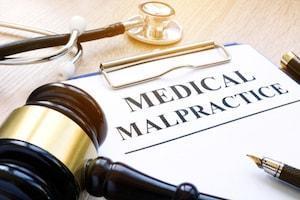
For nearly two-and-half centuries in Pennsylvania, medical malpractice lawsuits could be brought against doctors in any region in which the doctors practiced medicine. However, in 2003, the Pennsylvania Supreme Court changed the rule and limited the venue options to the county in which the injury occurred. The rule change was due to growing fears that plaintiffs could “venue shop,” which could potentially cause medical insurance rates to increase and lead doctors to leave the commonwealth. Since plaintiffs could file their lawsuits in any county where the physician worked, they may have chosen to pursue legal action in an area where juries were more likely to find the doctor to be at fault.
Recently, the issue was reopened when the Pennsylvania Supreme Court suggested reinstating the previous rules governing venue selection. Those who are considering taking legal action for medical malpractice may wonder whether these rules should be reverted and whether the proposed changes would benefit the citizens of Pennsylvania.
When and Where Am I Most Likely to Get in a Car Accident?
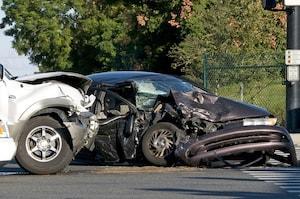
Car accidents are among the leading causes of death and injury in the United States and much of the world. Individuals who have been in a motor vehicle collision can face both health, financial, and emotional trauma for months and even years after the event. Auto accidents can cause significant harm to the body, especially in the head, neck, and back, possibly also resulting in prolonged pain and the inability to perform daily functions. The resulting medical bills can put an individual in the financial red zone, and many people report suffering from post traumatic stress disorder (PTSD) after having been involved in a motor vehicle accident.
Car Accident Statistics
According to studies, there are certain places and times of day in which collisions are most likely to occur. If you wish to prevent being in or causing a car accident, it is best to be more cautious if you are driving in the following locations or during the times listed below:
Tips for Avoiding Industrial Workplace Injuries in Pennsylvania
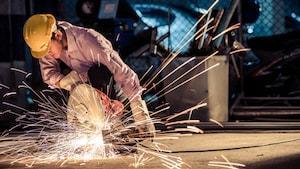
Industrial workers, on average, have to work in more dangerous environments than most other fields. The likelihood of a worker being involved or witnessing an industrial accident that can result in severe injury or even death is high, which is why every effort should be made to make workplaces safer by creating safety guidelines and following common sense standards. If you are an industrial worker, and you are concerned about your safety and the safety of your coworkers, here are a few simple tips to make your workplace safer:
Keep Floors Clear and Clean
In the heavy industrial field, injuries can occur if areas are not kept clean and free from clutter. Slip and falls are among the most common industrial accidents. Slipping on slick floors can result in back, shoulder, or neck injuries or damage to other parts of the body. This can potentially lead to a lifetime of pain and the inability to live a fulfilling life. Such injuries are easily avoidable by cleaning up messes as soon as they happen. Be sure to encourage your workplace to keep cleaning equipment in all sectors of your workplace so that such messes do not accumulate.

 412-680-7877
412-680-7877






